ai突破性技术
The Motto of the present period is Artificial Intelligence ( AI). Technologists, scholars, journalists, and venture capitalists alike intone the word. As with several phrases that extend from specialized academic fields into general circulation, the use of the term is followed by substantial confusion.
当前阶段的座右铭是人工智能(AI)。 技术人员,学者,新闻记者和风险投资家也都使用了这个词。 如同从专业领域扩展到一般发行领域的几个短语一样,使用该术语后会引起很大的混淆。
But this isn’t the standard case where the public doesn’t understand the scientists — here the scientists are just as puzzled as to the public. The thought that our age is somehow seeing the rise of a digital intellect that rivals our own entertains us all — enthusiasm us and scaring us in equal measure. And sadly it distracts us.
但这不是公众不了解科学家的标准情况-这里的科学家和公众一样困惑。 人们以为我们的年龄正在某种程度上看到与我们自己相抗衡的数字智力的兴起使我们所有人都开心起来-充满热情并以同样的方式吓us我们。 可悲的是它分散了我们的注意力。
There’s a particular story about the present period that one can tell. Consider the following story which involves decisions about people, computers, data, and life-or-death, but where the emphasis is something other than fantasies about intelligence-in-silicon. We were doing an ultrasound when our relative spouse was pregnant 14 years ago.
关于当前时期,有一个特别的故事可以告诉我们。 考虑下面的故事,该故事涉及有关人,计算机,数据和生死攸关的决定,但其中的重点不在于关于硅情报的幻想。 14年前我们的亲戚怀孕时,我们正在做超声波检查。
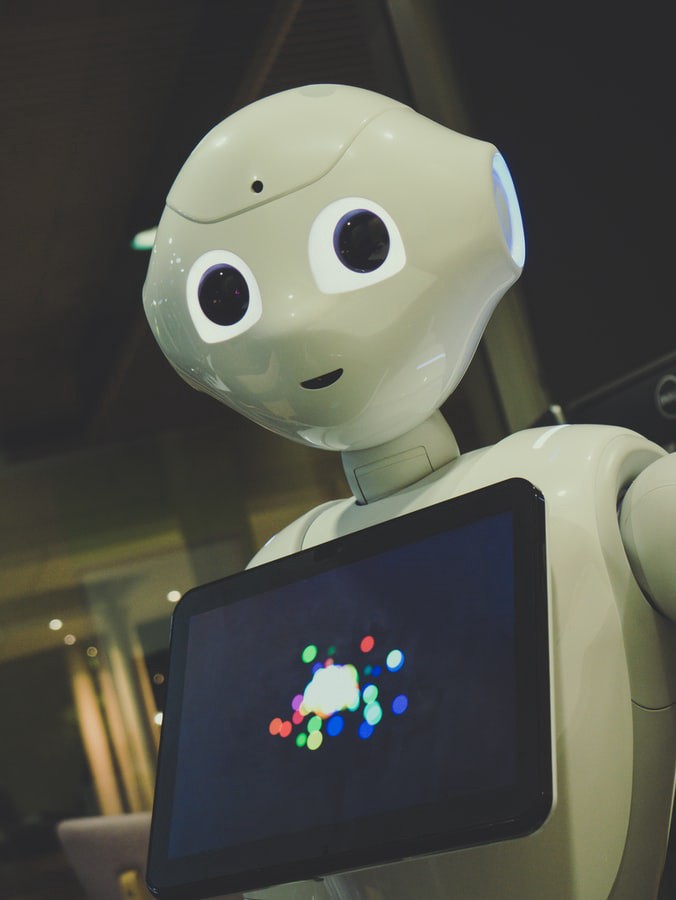
A geneticist was in the room, and she pointed out some white spots around the fetus’ heart. “These are Down syndrome signs,” she said, “and your risk has now risen to 1 in 20.” She further told us that we might discover if the fetus really had the Down syndrome underlying genetic alteration via an amniocentesis.
一位遗传学家在房间里,她指出了胎儿心脏周围的一些白色斑点。 她说:“这些是唐氏综合症的征兆,您的风险现在已经上升到20分之一。” 她进一步告诉我们,我们可能会发现胎儿是否确实确实存在通过羊膜穿刺术进行基因改变的唐氏综合症。
But amniocentesis was risky — the chance of killing the fetus was about 1 in 300 during the operation. As a statistician, I was eager to figure out where those numbers came from. To cut a long story short, I found that a statistical study had been done in the United Kingdom a decade before, where these white spots, which represent calcium accumulation, were in fact identified as a predictor of Down syndrome
但是羊膜穿刺术是有风险的–手术中杀死胎儿的几率约为300。 作为一名统计学家,我很想弄清楚这些数字的来源。 长话短说,我发现十年前在英国进行了一项统计研究,这些代表钙积累的白色斑点实际上被确定为唐氏综合症的预测因子
But I also found that our test’s imaging system had a few hundred more pixels per square inch than the system used in the UK analysis. I went back to tell the geneticist that I thought the white spots were probably false positives — that they were simply “white noise.” She said, “Ah, that’s why we started seeing an upsurge in the diagnosis of Down syndrome a few years ago; it’s when the new computer arrived.”
但是我还发现,我们测试的成像系统每平方英寸的像素比英国分析中使用的系统多数百个像素。 我回去告诉遗传学家,我认为白点可能是假阳性-它们仅仅是“白噪声”。 她说:“嗯,这就是为什么几年前我们开始在唐氏综合症的诊断方面看到了高涨的原因; 是新电脑到货的时候。”
We did not do the amniocentesis, and some months later a healthy girl was born. But the episode worried me, particularly after a back-of-the-envelope estimate persuaded me that this diagnosis had been made to several thousands of people worldwide the same day, that many of them had opted for amniocentesis, and that a number of babies had died needlessly. And that happened day by day before it got fixed somehow. The problem this episode exposed was not about my individual medical care; it was about a medical system that evaluated variables and outcomes in different locations and times, performed statistical analyses, and made use of the findings elsewhere and at different times.
我们没有进行羊膜穿刺术,几个月后,一个健康的女孩出生了。 但是这一集让我感到担忧,特别是在经过信封的估算之后,使我确信这一诊断是在当天对全世界数千人做出的,其中许多人选择了羊膜穿刺术,并且有许多婴儿不必要地死了而且这种情况每天都在以某种方式解决之前就已经发生了。 此事件暴露的问题与我个人的医疗保健无关; 这是关于一个医疗系统,该系统评估不同位置和时间的变量和结果,进行统计分析并利用其他地方和不同时间的发现。
The problem had to do not only with data analysis per se, but with what database researchers term “provenance” — generally, where did data originate, what inferences were made from the data, and how important are those inferences to the present situation? Although a qualified person could be able to do all of this on a case-by-case basis, the challenge was to build a planetary-scale medical system that would be able to do this without the need for such extensive human supervision.
这个问题不仅与数据分析本身有关,而且与数据库研究人员所称的“来源”有关—通常,数据起源于何处,从数据中得出什么推论,以及这些推论对当前状况有多重要? 尽管有资质的人员可以逐案完成所有这些工作,但是挑战在于建立一个行星级医疗系统,该系统将能够在不需要如此广泛的人工监督的情况下做到这一点。
I am also a computer scientist, and it happened to me that the concepts needed to construct such inference-and-decision-making systems on a planetary scale, combine computer science with statistics, and take human utility into account, were nowhere to be found in my schooling. And it occurred to me that the development of such principles — which will be required not only in the medical domain but also in areas such as trade, transportation, and education — was at least as important as those of building AI systems that can blind us with their game-playing or sensorimotor capabilities.
我也是计算机科学家,但碰巧我发现,在行星级上构建这样的推理和决策系统,将计算机科学与统计结合并考虑到人类实用性所需的概念无处可寻在我的学校。 在我看来,不仅在医学领域而且在贸易,运输和教育等领域都将需要的这些原则的发展,至少与构建可能使我们蒙蔽我们的AI系统一样重要。具有游戏性或感觉运动能力。
If we get to understand “intelligence” soon or not, we have a big challenge on our hands in getting machines and people together in ways that improve human life. While some interpret this task as subordinate to the development of “artificial intelligence,” it can also be regarded as more prosaically — but no less reverently — as the formation of a new branch of engineering. Much like civil engineering and chemical engineering in the past decades, this new discipline is aimed at corralling the power of a few key concepts, giving people new tools and skills, and doing so safely.
如果我们很快就会了解“智能”,那么在以改善人类生活的方式使机器和人员团结在一起方面,我们面临着巨大的挑战。 虽然有些人认为这项任务属于“人工智能”的发展,但它也可以看作是平淡无奇的,但同样也可以看作是工程新分支的形成。 就像过去几十年的土木工程和化学工程一样,这个新学科旨在巩固一些关键概念的力量,为人们提供新的工具和技能,并安全地这样做。
Whereas civil engineering and chemical engineering were focused on physics and chemistry, this new engineering discipline will be founded on ideas that the preceding century gave substance to — ideas such as “knowledge,” “algorithm,” “data,” “uncertainty,” “computing,” “inference,” and “optimization.” Moreover, as much of the new discipline‘s emphasis will be on data from and about humans, its emphasis will be on data from and about human beings.
土木工程和化学工程的重点是物理和化学,而这一新的工程学科将建立在上世纪实质的思想基础上,例如“知识”,“算法”,“数据”,“不确定性”,“计算”,“推理”和“优化”。 此外,由于新学科的重点将主要集中在人类数据和人类数据上,因此其重点将集中在人类数据和人类数据上。
Although the building blocks have started to appear, the guidelines for putting together these blocks have not yet evolved, and so the blocks are being placed together in ad-hoc ways.
尽管构建块已经开始出现,但是将这些块组合在一起的准则尚未发展,因此,这些块以临时方式放置在一起。
Thus, just as human beings designed buildings and bridges before structural engineering took place, humans are constructing societal-scale, inference-and-decision-making structures involving computers, humans, and the environment. Just as early buildings and bridges often fall to the ground — in unexpected ways and with devastating consequences — there are also serious conceptual shortcomings in many of our early social inference and decision-making processes.
因此,就像人类在进行结构工程之前设计建筑物和桥梁一样,人类正在构建涉及计算机,人类和环境的社会规模,推理和决策制定结构。 就像早期的建筑物和桥梁经常以意外的方式倒塌并带来毁灭性的后果一样,在我们许多早期的社会推论和决策过程中,也存在严重的概念缺陷。
And, sadly, we are not very good at predicting what will become the next critical error that arises. What we do lose is an engineering discipline with its theoretical and design concepts.
而且,可悲的是,我们不太擅长预测什么将成为下一个关键错误。 我们所失去的是一门具有其理论和设计概念的工程学科。
Too frequently, the existing public discourse on these topics uses “AI” as an analytical wildcard, one that makes it difficult to think about the nature and implications of emerging technologies. Let us start by more carefully examining what “AI” has been used to refer to, both recently and historically.
现有的关于这些主题的公开讨论经常使用“ AI”作为分析通配符,这使得很难考虑新兴技术的性质和含义。 让我们首先更仔细地研究一下最近和历史上曾使用过的“ AI”。
Much of what is known today as “AI,” particularly in the public domain, has been called “Machine Learning” (ML) for several decades. ML is an algorithmic field that incorporates ideas from statistics, computer science, and many other disciplines (see below) to develop algorithms that process data, predict, and support decision making. ML is the real thing in terms of bearing on the real world, and not just recently. In reality, it was already clear in the early 1990s that ML would develop into massive industrial significance, and by the turn of the century, forward-looking companies
几十年来,今天被称为“ AI”的很多东西,特别是在公共领域,被称为“机器学习”(ML)。 ML是一个算法领域,它融合了统计,计算机科学和许多其他学科的思想(请参阅下文),以开发处理数据,预测并支持决策的算法。 就影响现实世界而言,ML才是真正的事物,而不仅仅是最近。 实际上,在1990年代初期已经很明显,机器学习将发展为巨大的工业意义,到本世纪初,具有前瞻性的公司
Throughout their company, such as Amazon already used ML, solving mission-critical back-end problems in fraud detection and supply-chain prediction, and developing groundbreaking consumer-facing services such as recommendation systems. As data sets and computing resources grew rapidly over the next two decades, it became clear that ML would soon be controlling not only Amazon but virtually any organization where decisions could be tied to large-scale information.
在整个公司中,例如Amazon已经使用ML,解决了欺诈检测和供应链预测中的关键任务后端问题,并开发了突破性的面向消费者的服务,例如推荐系统。 在接下来的二十年中,随着数据集和计算资源的快速增长,很明显,ML很快将不仅控制亚马逊,而且几乎控制所有决策可能与大规模信息相关的组织。

New business models are expected to evolve. The term “Data Science” began to be used to refer to this phenomenon, indicating the need for experts in ML algorithms to collaborate with database and distributed-system experts to create scalable, stable ML systems and represent the wider social and environmental reach of the resulting systems.
新的商业模式有望发展。 术语“数据科学”开始被用来指代这一现象,这表明机器学习算法专家需要与数据库和分布式系统专家合作,以创建可扩展,稳定的机器学习系统,并代表着更广泛的社会和环境影响。结果系统。
Over the past few years, this confluence of concepts and developments in technology has been rebranded as “AI.” The rebranding requires some scrutiny.
在过去的几年中,技术概念和发展的融合已经更名为“ AI”。 更名需要仔细检查。
Historically, in the late 1950s, the term “AI” was coined to refer to the heady desire to realize an object possessing human-level intelligence in software and hardware. We will use the term “human-imitative AI” to refer to this desire, underlining the notion that the artificially intelligent object should appear to be one of us, if not at least physically mentally (whatever that may mean). That was essentially an academic undertaking. Although there were already related academic fields such as operations analysis, statistics, pattern recognition, information theory, and control theory, which were often influenced by human intelligence (which animal intelligence),
从历史上看,在1950年代后期,“ AI”一词的产生是指人们渴望实现在软件和硬件方面具有人类智能的对象。 我们将使用“模仿人类的AI”一词来指代这种愿望,强调了这样一种观念,即即使不是至少在精神上(无论意味着什么),人工智能对象也应该是我们中的一员。 这本质上是一项学术任务。 尽管已经有相关的学术领域,例如运营分析,统计,模式识别,信息理论和控制理论,这些领域通常受到人类智能(动物智能)的影响,
These fields were inspired by the capacity, say, of a squirrel to perceive the three-dimensional structure of the forest in which it lives, and to jump across its branches. “AI” was intended to concentrate on something else — high-level or “cognitive” human capacity to “reason” and “think.” Sixty years later, though, high-level reasoning and thinking remain elusive. The technologies now called “AI” emerged mainly in the engineering fields concerned with the identification of low-level patterns and regulation of movement, and in the field of statistics — the discipline centered on identifying trends in data and making well-founded predictions, testing hypotheses and decisions.
举例来说,这些领域的灵感来自于一只松鼠感知其所居住的森林的三维结构并跨越其树枝的能力。 “ AI”旨在专注于其他方面,即具有较高水平或“认知”能力的“推理”和“思考”能力。 但是,六十年后,高级推理和思考仍然难以捉摸。 现在被称为“ AI”的技术主要出现在与识别低级模式和运动规律有关的工程领域中,以及在统计领域中,该领域以识别数据趋势并做出有根据的预测,测试为中心假设和决定。
Indeed, the popular “backpropagation” algorithm that David Rumelhart rediscovered in the early 1980s, and now considered as the cornerstone of the so-called “AI revolution,” first appeared in the 1950s and 1960s in the field of control theory. One of its early uses was to refine the Apollo spaceships’ thrusts as they went towards the moon.
的确,大卫·鲁梅尔哈特(David Rumelhart)在1980年代初重新发现了流行的“反向传播”算法,现在将其视为所谓的“人工智能革命”的基石,它首先出现在1950年代和1960年代的控制理论领域。 它的早期用途之一是在阿波罗飞船驶向月球时改进其推力。
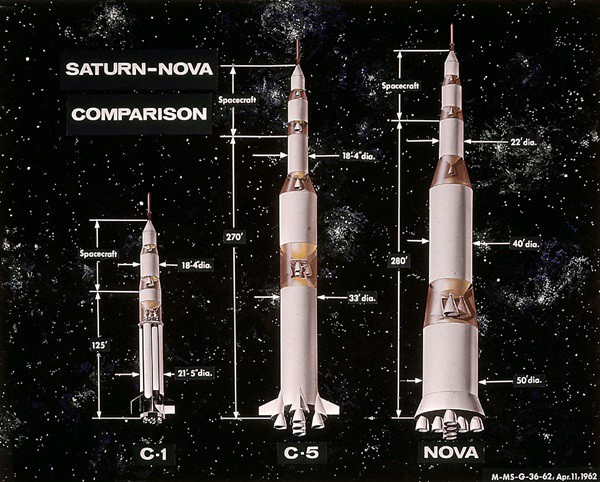
Significant progress has been made since the 1960s, but the development of human-imitative AI has arguably not culminated in it. Rather, as in the case of the Apollo spaceships, these concepts have always been kept behind the scenes and based on unique technical problems as the handiwork of researchers. While not evident to the general public, research and system-building have been a big success in areas such as document retrieval, text processing, spam detection, recommendation systems, custom search, social network analysis, preparation, diagnostics, and A / B testing — these are the innovations that have propelled companies such as Google, Netflix, Facebook, and Amazon.
自1960年代以来已经取得了重大进展,但是可以说人类模仿AI的发展并没有达到顶点。 相反,就像在阿波罗号太空船中一样,这些概念一直被隐藏在幕后,并基于独特的技术问题作为研究人员的手工。 尽管对公众并不明显,但是研究和系统构建在诸如文档检索,文本处理,垃圾邮件检测,推荐系统,自定义搜索,社交网络分析,准备,诊断和A / B测试等领域取得了巨大的成功。 -这些创新推动了Google,Netflix,Facebook和Amazon等公司。
One might only agree to refer to all of this as “AI,” and indeed that’s what seems to have happened. Such labeling may come as a surprise to optimization or statistics researchers, who wake up to find themselves suddenly referred to as “AI researchers.” But aside from labeling researchers, the bigger problem is that using this special, ambiguous acronym prevents a clear understanding of the spectrum of intellectual and commercial issues at stake.
可能只同意将所有这些都称为“ AI”,而实际上这就是发生的情况。 这种标记可能会让优化或统计研究人员感到惊讶,他们醒来后突然发现自己被称为“ AI研究人员”。 但是,除了给研究人员贴标签外,更大的问题是,使用这种特殊的,模棱两可的首字母缩写词无法清楚地了解所涉知识和商业问题的范围。
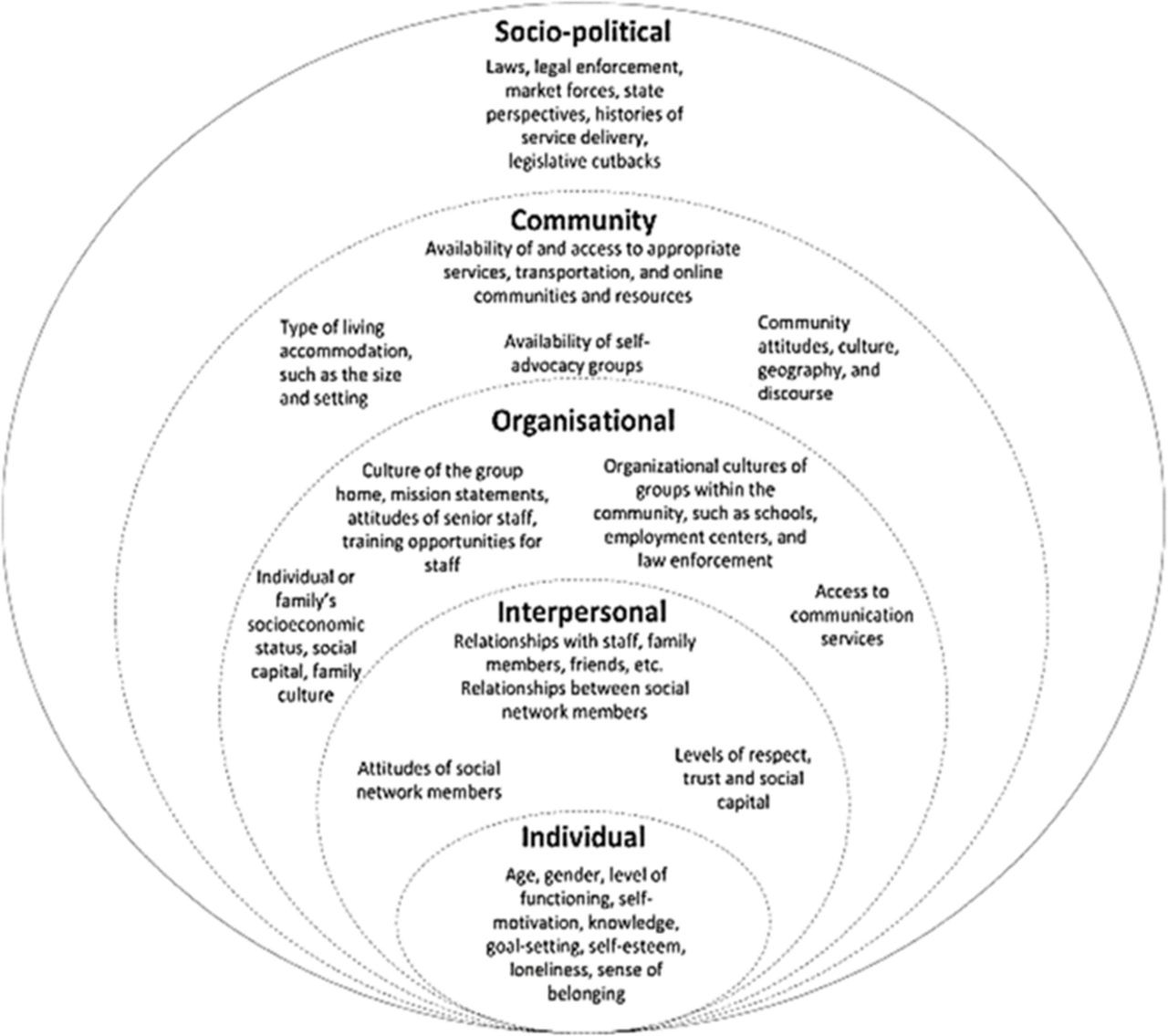
Over the past two decades, significant progress has been made — in industry and research — in a complementary effort to human-imitative AI, also referred to as “Information Augmentation.” Computation and data are used here to build services that increase human intelligence and creativity. A search engine can be seen as an example of IA (increasing human memory and awareness of facts), as can natural language translation (increasing a human’s ability to communicate). The generation of sounds and images based on computing serves as a palette and enhancer of creativity for artists.
在过去的二十年中,在与人类模仿的AI(也称为“信息增强”)相辅相成的工作中,工业和研究领域取得了重大进展。 这里使用计算和数据来构建可增强人类智慧和创造力的服务。 搜索引擎可以看作是IA(增加人们的记忆力和对事实的了解)的一个示例,自然语言翻译也可以看作是IA(提高人们的交流能力)的一个例子。 基于计算的声音和图像生成可作为艺术家的调色板和创造力的增强器。
Although such services may conceivably entail high-level logic and analysis, at the moment they don’t — they just perform various kinds of string-matching and numerical operations that catch patterns that can be used by humans.
尽管可以想象,此类服务可能需要高级逻辑和分析,但目前还没有—它们只是执行各种字符串匹配和数字运算,以捕获人类可以使用的模式。
Hoping that the reader can accept one last acronym, let us narrowly conceive of an “Intelligent Infrastructure” (II) discipline whereby there is a network of computing, data, and physical entities that makes human environments more friendly, interesting, and secure. Such infrastructure is starting to emerge in areas such as transportation, health, trade, and finance, with far-reaching consequences for individuals and communities. This advent often occurs in discussions about an “Internet of Things,” but this initiative usually refers to the mere issue of having “stuff” on the Internet — not the much greater collection of challenges associated with these “stuff” capable of manipulating these data streams to discover information about the environment and communicating with people and other “things” at a far higher level of abstract
希望读者能够接受最后一个缩写词,让我们狭义地构想“智能基础设施”(II)学科,该学科具有计算,数据和物理实体的网络,使人类环境更加友好,有趣和安全。 这种基础设施已开始在交通,卫生,贸易和金融等领域出现,对个人和社区产生了深远的影响。 这种出现通常发生在有关“物联网”的讨论中,但该倡议通常仅指在互联网上拥有“东西”的问题,而不是与能够处理这些数据的“东西”相关的更多挑战。流以发现有关环境的信息,并以更高的抽象水平与人和其他“事物”进行通信

Returning to my personal anecdote, for example, we could imagine living our lives in a “societal-scale medical system” that creates data flows and data-analysis flows between doctors and devices placed in and around human bodies, thus allowing human intelligence to make a diagnosis and provide treatment. The framework will integrate knowledge on medications and therapies from cells in the body, DNA, blood samples, climate, population genetics, and the vast scientific literature. It will concentrate not just on a single patient and a doctor, but on relationships among all humans — just as current medical research enables tests to be carried out on one group of humans (or animals) in the care of other humans. It will help to preserve notions of significance, provenance, and continuity in the manner in which the existing banking system works on such financial and payment challenges. And although one may anticipate several problems that occur in such a system — including issues of privacy, liability issues, protection issues, etc. — these issues should be properly treated as obstacles, not show-stoppers.
例如,回到我的个人轶事,我们可以想象自己生活在一个“社会规模的医疗系统”中,该系统在医生和放置在人体内部或周围的设备之间创建数据流和数据分析流,从而使人类的智能能够诊断并提供治疗。 该框架将整合有关人体细胞,DNA,血液样本,气候,种群遗传学和大量科学文献的药物和治疗知识。 它将不仅关注单个患者和医生,而且关注所有人类之间的关系,就像当前的医学研究可以在一组人类(或动物)的照顾下进行测试一样。 它将有助于以现有银行系统应对此类财务和支付挑战的方式来保留重要,出处和连续性的概念。 尽管人们可能会预料到这种系统中会发生一些问题,包括隐私,责任问题,保护问题等,但这些问题应适当地视为障碍,而不是阻碍。
Now we come to a key issue: Is working on classical human-imitative AI the best or only way to concentrate on these bigger challenges? In reality, some of ML’s most heralded recent success stories were in areas related to human-imitative AI — fields such as computer vision, speech recognition, gameplay, and robotics. So maybe we should only await further progress in certain domains. We need to make two points here. First, while one may not know it from reading the newspapers, in reality, progress in human-imitative AI has been limited — we are very far from realizing expectations for human-imitative AIs.
现在我们要解决一个关键问题:在经典的模仿人类的AI上工作是专注于这些更大挑战的最佳还是唯一方法? 实际上,ML最近在一些最成功的成功案例中都涉及到与人类模仿的AI相关的领域,例如计算机视觉,语音识别,游戏玩法和机器人技术。 因此,也许我们只应等待某些领域的进一步发展。 我们需要在这里提出两点。 首先,虽然人们可能不看报纸就知道这一点,但实际上,人类模仿AI的进步是有限的-我们离实现人类模仿AI的期望还差得很远。
Unfortunately, the excitement (and fear) of making even modest progress on human-imitative AI contributes to levels of over-exuberance and media coverage that are not present in other engineering fields.
不幸的是,在模仿人类的人工智能上取得适度进步的兴奋(和恐惧)助长了其他工程领域所没有的过剩和媒体报道。
Second, and more importantly, to solve important IA and II problems, progress in these fields is neither sufficient nor necessary. Consider self-driving cars, on the sufficiency side. A variety of engineering problems that may have no connexion to human competencies (or human lack of competencies) would need to be solved for such technology to be realized. The overall transport structure (a II structure) would possibly resemble the current air traffic control system more closely than the current set of loosely-coupled, forward-looking, inattentive human drivers. It will be much more complex than the current air traffic control system, especially in using large data volumes and adaptive statistical modeling to inform fine-grained decisions. It is those issues that need to be at the forefront, and an emphasis on human-imitative AI can be a diversion in such an endeavor.
其次,更重要的是,要解决重要的IA和II问题,在这些领域取得进展既不够充分,也没有必要。 考虑充足性方面的自动驾驶汽车。 为了实现这种技术,需要解决可能与人的能力不相关(或人缺乏能力)的各种工程问题。 总体运输结构(II型结构)可能比当前的松散耦合,前瞻性,不专心的人类驾驶员更接近于当前的空中交通管制系统。 这将比当前的空中交通管制系统复杂得多,尤其是在使用大数据量和自适应统计模型来告知细粒度的决策方面。 正是这些问题需要放在最前沿,而对人类模仿的AI的强调可能会成为这种努力的转移。
As for the necessity statement, it is often argued that the human-imitative AI aspiration subsumes IA and II aspirations, since a human-imitative AI system would not only be able to solve the classical AI problems (as expressed, for example, in the Turing test), but would also be our best bet to solve IA and II issues. Such a claim has no basis in history. Has civil engineering evolved by trying to build an artificial carpenter or bricklayer? Is chemical engineering supposed to have been designed to construct an artificial chemist? Even more polemically: if our goal was to construct chemical plants, could we first have produced an artificial chemist who would then have figured out how to develop a chemical plant?
至于必要性的陈述,经常有人认为,模仿人类的AI愿望包含IA和II渴望,因为模仿人类的AI系统不仅能够解决经典的AI问题(例如,图灵测试),但这也是解决IA和II问题的最佳选择。 这样的主张在历史上是没有根据的。 土木工程是否通过尝试建造人造木匠或瓦工而发展了? 是否应该设计化学工程来构造人工化学家? 更具争议性的是:如果我们的目标是建造化工厂,那么我们是否可以首先培养出一名人工化学家,然后再找出如何发展化工厂?

A similar argument is that human intelligence is the only form of intelligence we know and that as a first move we should try to emulate that. But in fact, humans are not very good at any kind of reasoning — we’ve got our lapses, prejudices, and weaknesses. In addition, fundamentally, we have not evolved to conduct the kinds of large-scale decision-making that modern II systems have to face, nor to cope with the kinds of ambiguity that occur in II contexts. One could argue that an AI system is not only imitating human intelligence But it would also “right,” and would arbitrarily scale up big problems. But we are now in the world of science fiction — such speculative claims, though exciting in the setting of fiction, should not be our key strategy to move forward in the face of the crucial problems of IA and II that are beginning to arise. On their own terms, we need to solve IA and II issues, not as a mere corollary of a human-imitative AI agenda.
一个类似的论点是,人类智能是我们知道的唯一智能形式,因此,作为第一步,我们应该尝试模仿它。 但是实际上,人类在任何推理方面都不是很擅长-我们有失误,偏见和弱点。 此外,从根本上说,我们还没有发展到进行现代II系统必须面对的大规模决策,也没有应对II环境中出现的歧义。 有人可能会争辩说,一个AI系统不仅在模仿人类的智力,而且会“正确”,并且会任意扩大大问题。 但是,我们现在处于科幻小说的世界中,尽管在小说的背景下令人兴奋,但这种投机性主张不应成为我们面对开始出现的IA和II重大问题而前进的关键策略。 用他们自己的话说,我们需要解决IA和II问题,而不仅仅是人类模仿AI议程的必然结果。
It is not difficult to recognize algorithmic and technology problems that don’t core themes in human-imitative AI research in II systems. II systems need the ability to handle distributed information sources that are rapidly evolving and are likely to be incoherent globally. Such systems have to cope with cloud-edge interactions in making timely, distributed decisions and have to deal with long-tail phenomena whereby there are loads of data about some individuals and little data about other people. They must overcome data sharing problems across institutional and competitive boundaries. Last but not least, and of particular importance, II systems must bring economic ideas such as incentives and pricing into the realm of statistical and computational infrastructures that connect human beings to each other and valued goods. Such II systems may be seen as generating markets rather than simply offering a service. There are fields like music, literature, and journalism that are crying out for such markets to emerge, where data analysis connects producers and consumers. And all of this must be achieved within the framework of emerging cultural, ethical, and legal norms.
在II系统中,以人工模拟AI研究为核心的算法和技术问题并不难理解。 II系统需要具有处理Swift发展且可能在全球范围内不一致的分布式信息源的能力。 这样的系统必须及时做出分布式决策来应对云边缘的交互作用,并且必须应对长尾现象,即一些人的数据负荷很大,而其他人的数据却很少。 他们必须克服跨机构和竞争性边界的数据共享问题。 最后但并非最不重要且特别重要的一点是,II系统必须将诸如激励措施和价格之类的经济思想带入统计和计算基础设施领域,以将人与人和有价值的商品联系起来。 这种II系统可能被视为产生市场,而不是简单地提供服务。 音乐,文学和新闻学等领域正在迫切希望此类市场出现,数据分析将生产者和消费者联系起来。 所有这些都必须在新兴的文化,道德和法律规范的框架内实现。

Classical human-imitative AI problems of course still remain of great interest. However, the current emphasis on conducting AI research through data collection, implementing “deep learning” infrastructure, and demonstrating systems that emulate those loosely defined human skills — with little in the way of evolving explanatory concepts — tends to distract attention from major open issues in classical AI. These problems include the need to incorporate meaning and reasoning into systems that process natural language, the need to infer and reflect causality, the need to infer and interpret causality, the need to establish computationally traceable representations of uncertainty, and the need to build long-term goal-setting frameworks. These are classic goals in human-imitative AI, but it’s easy to forget that they’re not yet solved in the latest hubbub over the “AI revolution”
当然,经典的模仿人类的AI问题仍然引起人们极大的兴趣。 但是,当前的重点是通过数据收集进行AI研究,实施“深度学习”基础架构以及演示模仿那些松散定义的人类技能的系统,而这几乎没有发展解释性概念的方式,这往往将注意力从经典AI。 这些问题包括:需要将含义和推理纳入处理自然语言的系统中;需要推断和反映因果关系;需要推断和解释因果关系;需要建立可计算的,可追溯的不确定性表示形式;以及需要建立长期的学期目标设定框架。 这些是模仿人类的AI的经典目标,但很容易忘记,在关于“ AI革命”的最新话题中尚未解决这些问题
IA will also remain completely important, as machines will not be able to match humans in their ability to think abstractly about real-world circumstances in the near future. To solve our most pressing issues, we’ll need well-thought-out human and machine interactions. And we’ll want computers to activate new levels of human creativity, not substitute (whatever that may mean) human creativity.
IA仍然将非常重要,因为在不久的将来,机器将无法与人类相提并论,可以对现实世界的情况进行抽象思考。 为了解决最紧迫的问题,我们需要经过深思熟虑的人机交互。 而且,我们希望计算机激活人类创造力的新水平,而不是替代(无论意味着什么)人类创造力。
It was John McCarthy (when he was a professor in Dartmouth, and soon to take a course place at MIT) which coined the word “AI” to distinguish apparently its, New research agenda from that of Norbert Wiener (then an older MIT professor). Wiener had invented “cybernetics” to refer to his own concept of smart systems — a concept closely related to studies on operations, statistics, pattern recognition, knowledge theory, and control theory. On the other side, McCarthy underscored the links to rationality.
是约翰·麦卡锡(John McCarthy,当他在达特茅斯(Dartmouth)任教授时,不久将在麻省理工学院上课)创造了“人工智能”一词,以区别于其新的研究议程与诺伯特·维纳(Norbert Wiener)(当时是麻省理工学院的一位资深教授) 。 Wiener发明了“ cybernetics”来指称自己的智能系统概念,该概念与运筹学,统计,模式识别,知识论和控制论密切相关。 另一方面,麦卡锡强调了与理性的联系。
In an odd reversal, under the umbrella of McCarthy’s terms, it is Wiener‘s intellectual agenda that has come to dominate in the modern period. (This is certainly only a temporary state of affairs; the pendulum swings more in AI than in most sectors.)
在麦卡锡(McCarthy)的支持下,一次奇怪的逆转是,在现代,占主导地位的是维纳的知识分子议程。 (这当然只是暂时的情况;与大多数部门相比,人工智能的摆幅波动更大。)
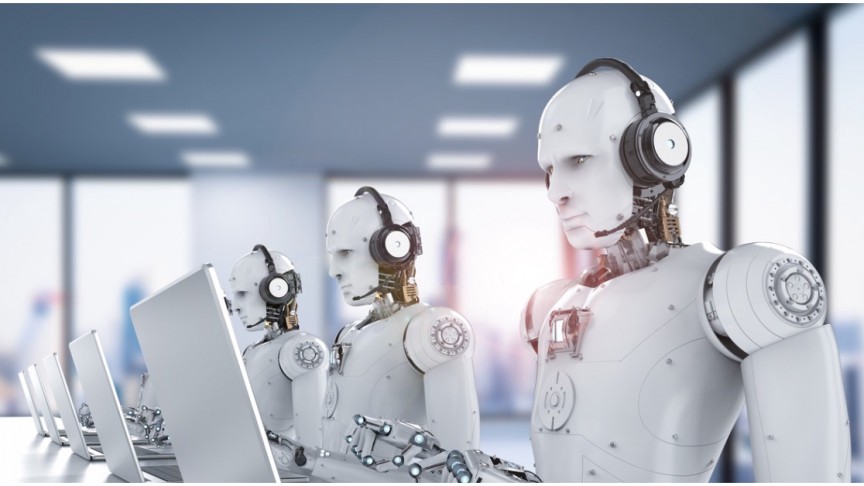
But we need to step beyond McCarthy and Wiener’s specific historical viewpoints.
但是,我们需要超越麦卡锡和维纳的特定历史观点。
We need to understand that the existing public AI dialogue, which focuses on a narrow subset of industry and a limited subset of academia, risks blinding us to the threats and opportunities posed by the full reach of AI, IA and II.
我们需要了解,现有的公共AI对话侧重于行业的一小部分,学术界的一小部分,可能使我们对AI,IA和II的全面发展所带来的威胁和机遇视而不见。
This focus is less about fulfilling the dreams of science fiction or super-human machine fantasies, and more about the need for human beings to consider and form technology as it becomes ever more prevalent and powerful in their everyday lives. In addition, a diverse range of voices from all walks of life is required in this understanding and shaping, not merely a dialogue among the technologically tuned. Focusing exclusively on human-imitative AI avoids listening to a suitably large variety of voices.
关注的重点不是实现科幻小说或超人机器的幻想,而是关注人类在其日常生活中变得越来越普遍和强大时考虑和形成技术的需求。 此外,在这种理解和塑造中,各行各业都需要各种各样的声音,而不仅仅是经过技术调整的人之间的对话。 专注于模仿人类的AI可以避免聆听各种适当的声音。
Although the industry will continue to drive many advances, academia will also continue to play an important role not just in providing some of the most creative technical ideas but also in bringing together researchers from the computational and statistical disciplines and researchers from other disciplines the contributions and perspectives of which are desperately required — especially the social sciences, the humanities, and cognitive sciences.
尽管该行业将继续推动许多进步,但学术界还将继续发挥重要作用,不仅在提供一些最具创造力的技术思想方面,而且还将使计算和统计学科的研究人员以及其他学科的研究人员聚集在一起。迫切需要其中的观点,尤其是社会科学,人文科学和认知科学。
On the other hand, while the humanities and sciences are important as we move forward, we can also not pretend that we are talking about something other than an engineering project of enormous size and scope — society seeks to create new kinds of objects. These artifacts should be designed to operate as stated. We don’t want to create programs that provide us with medical care, transportation choices, and business opportunities to find out that these programs don’t really work — that they are making mistakes that take a toll on human life and happiness. In this regard, as I have emphasized, the data-focused and learning-focused fields have yet to emerge as an engineering discipline. As fascinating as these latter areas tend to be, they can not yet be seen as being a branch of engineering.
另一方面,尽管人文和科学在前进中很重要,但我们也不能假装我们在谈论的不是大型项目和范围广泛的工程项目,而是社会在寻求创造新的对象。 这些工件应按规定操作。 我们不想创建为我们提供医疗护理,交通选择和商业机会的程序,以发现这些程序并没有真正起作用-他们犯了错误,给人类的生活和幸福带来了损失。 在这方面,正如我所强调的那样,以数据为中心和以学习为中心的领域尚未成为工程学科。 尽管后面这些领域会令人着迷,但它们仍不能被视为工程学的一个分支。
In addition, we should welcome the idea that what we’re experiencing is the emergence of a new engineering division. Frequently the word “tech” is usedInvoked in a narrow sense — in academia and beyond — with cold equipment overtones and negative connotations of loss of power by humans. But what we want it to be, maybe an engineering discipline.
另外,我们应该欢迎这样的想法,即我们正在经历的是新的工程部门的出现。 在学术界及以后的地区,“技术”一词经常用在狭义上,它带有冷淡的设备色调和人类丧失动力的负面含义。 但是我们想要的可能是工程学科。
We have a great opportunity in the modern age to conceive of something traditionally new — a human-centered discipline of engineering.
在现代,我们有很大的机会来构想传统上的新事物-以人为本的工程学科。
I’ll avoid giving this new discipline a name, but if the acronym “AI” continues to be used as a placeholder nomenclature for the future, let’s be mindful of this placeholder’s very real limitations. Let’s widen our reach, tone down the excitement, and consider the obstacles that lie ahead.
我会避免给这个新学科起个名字,但是如果首字母缩略词“ AI”继续用作将来的占位符命名法,那么请记住该占位符的真正限制。 让我们扩大影响范围,减轻兴奋感,并考虑前方的障碍。
沙伊克·萨默鲁丁 (Shaik Sameeruddin)
Acknowledgments: There are a variety of individuals, including Jeff Bezos, Dave Blei, Rod Brooks, Cathryn Carson, Tom Dietterich, Charles Elkan, Oren Etzioni, David Heckerman, Douglas Hofstadter, Michael Kearns, Tammy Kolda, Ed Lazowska, John Markoff, Esther Rolf, Maja Mataric, Dimitris Papailiopoulos, Ben Recht, Theodoros Rekoks And I would like to give a special thank you to Cameron Baradar at The Home, who inspired me to consider writing such a piece first.
一个cknowledgments:有各种各样的人,包括杰夫·贝佐斯,戴夫Blei,罗德·布鲁克斯,Cathryn卡森,汤姆Dietterich,查尔斯·埃尔肯,奥伦奥尼,大卫Heckerman,侯世国,迈克尔·卡恩斯,陈怡蓉科尔达,埃德Lazowska,约翰·马科夫的, Esther Rolf,Maja Mataric,Dimitris Papailiopoulos,Ben Recht,Theodoros Rekoks尤其要感谢The Home的Cameron Baradar,他启发了我考虑首先写这篇文章。
B
乙
数据科学与人工智能以及国家和国际实习的职业指南和路线图,请参考:(Career Guide and roadmap for Data Science and Artificial Intelligence &and National & International Internship’s, please refer :)
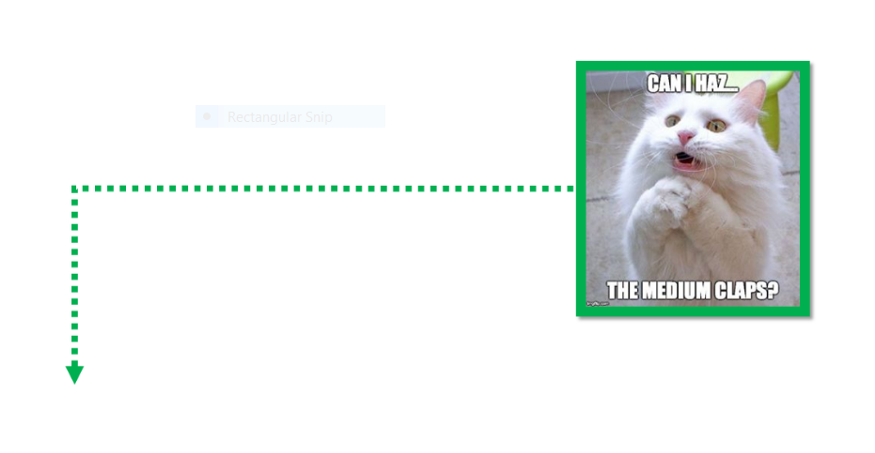
翻译自: https://medium.com/swlh/artificial-intelligence-there-has-not-been-a-breakthrough-yet-75c4cf32dd10
ai突破性技术


